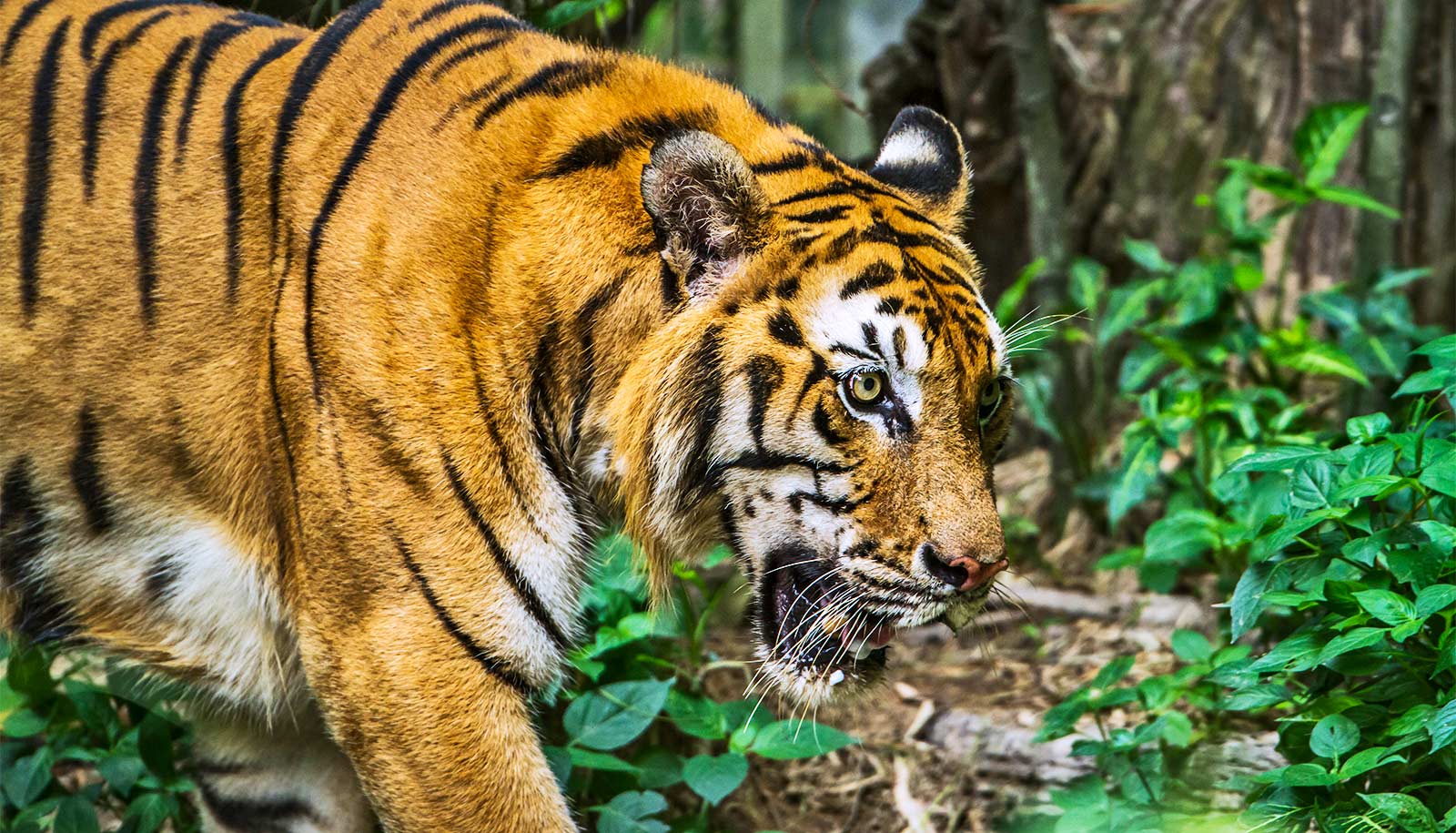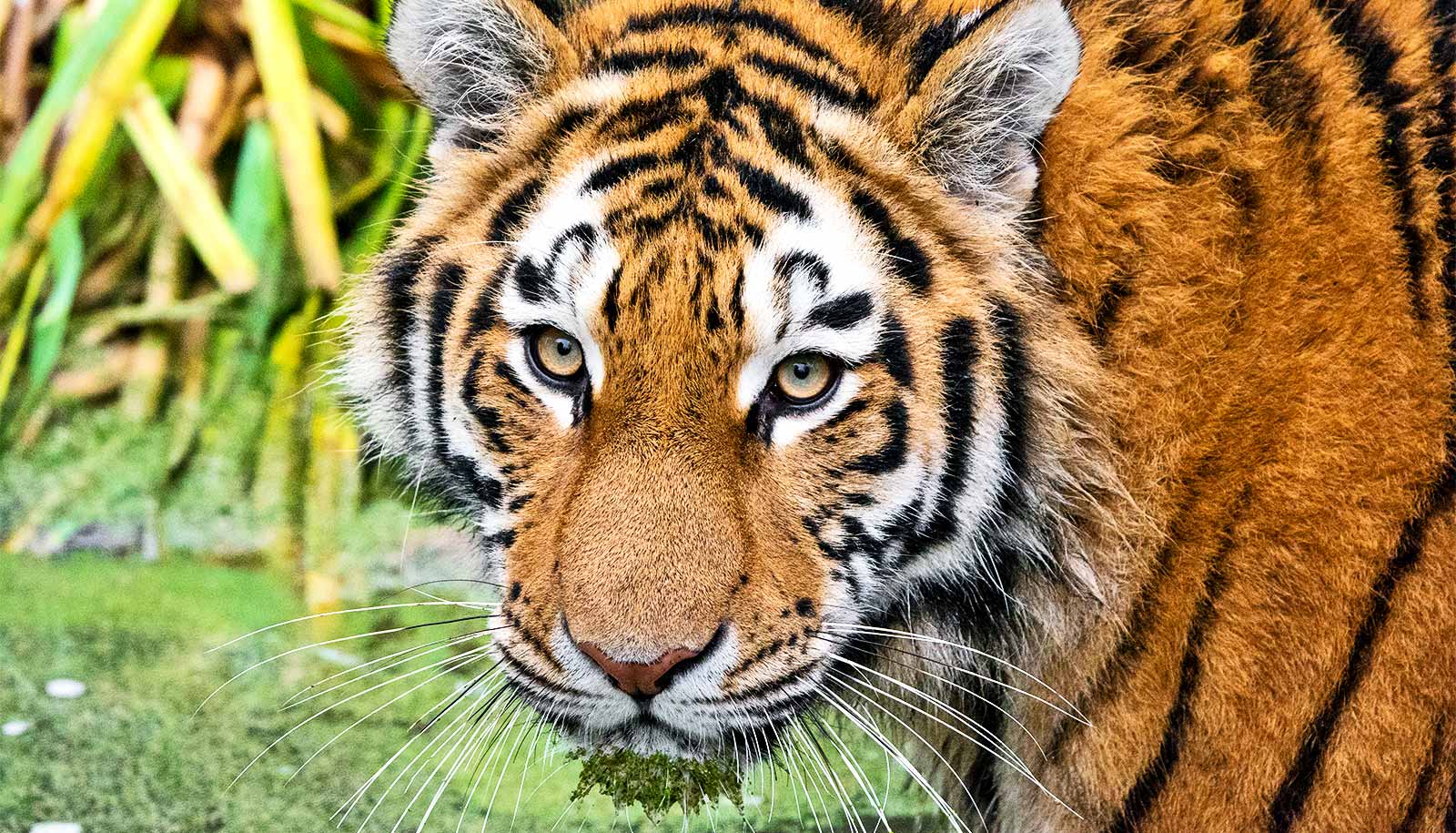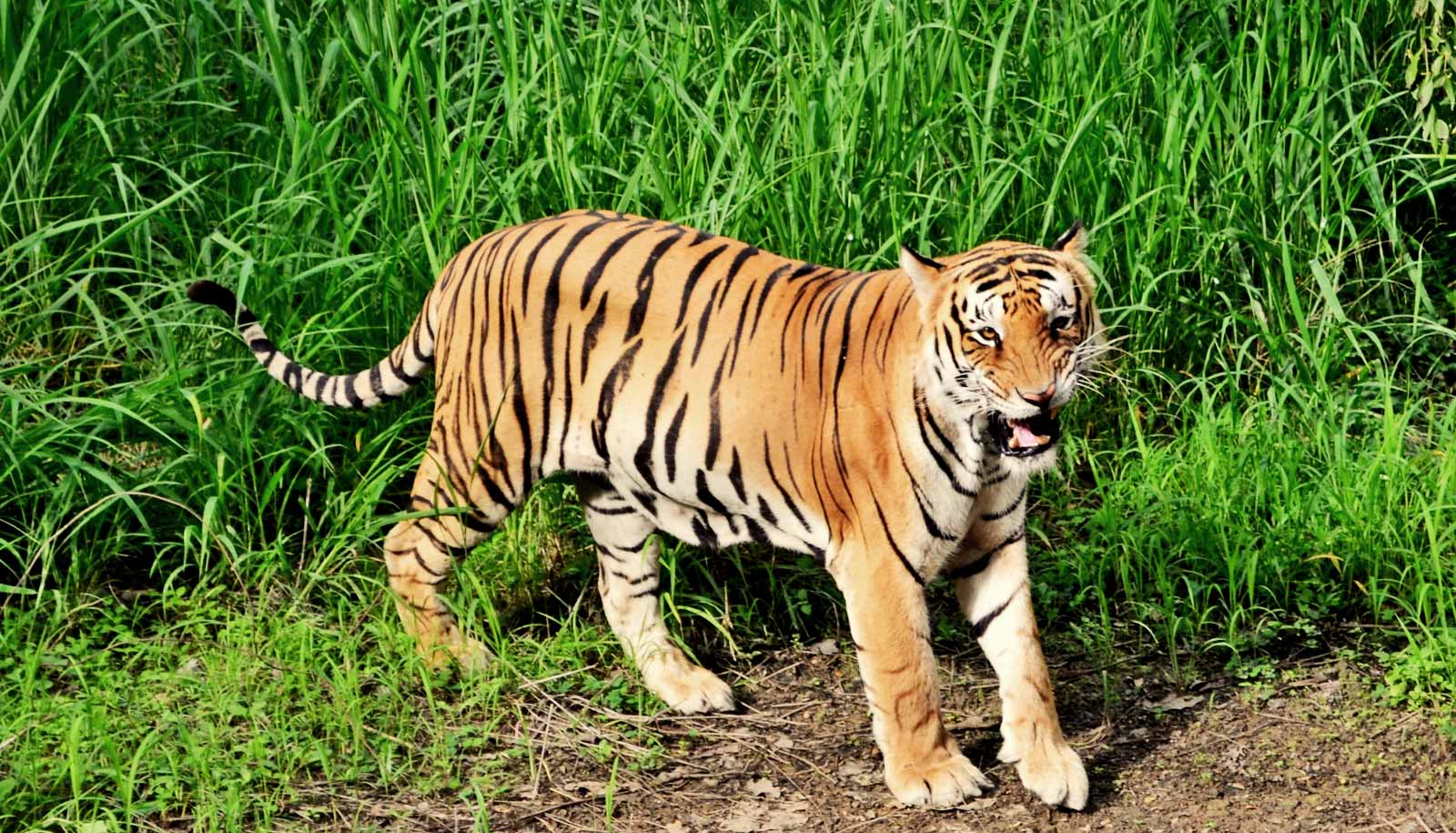Expanding roads and completion of a planned railway in Nepal’s Chitwan National Park could increase deaths of endangered tigers, disrupt habitats, and exacerbate other threats to biodiversity, a new study shows.
Using an advanced simulation model, researchers investigated how the rapid development of transport infrastructure, which is a major threat to endangered species worldwide, could affect future tiger populations.
The researchers analyzed what would happen to tigers in the future if they were to die from collisions with vehicles or from reductions in prey near transport infrastructure.
“We found that roads and railways would dramatically increase tiger mortality, as tigers would frequently encounter vehicles and trains while patrolling their territories,” says Neil Carter, an assistant professor at the University of Michigan School for Environment and Sustainability, and lead author of the paper in PeerJ.
“On average, in our model, tiger deaths along the roads and railways would reduce the tiger population from around 130 animals to just 50 animals over a 20-year period.”
These reductions are “alarming,” Carter notes, “and would jeopardize the future of tigers in the region.”
Based on these model results, researchers urge land planners, researchers, and developers to utilize Smart Green Infrastructure planning—such as realigning roads and railways to avoid critical tiger habitats and reducing traffic volumes and speeds—to minimize impacts on tiger biodiversity and their prey.
“There is still much to be learned about the effects of roads and railways on tiger behaviors and populations,” Carter says, “but we think using models like ours can help promote tiger-friendly conservation development.”
Source: Lori Atherton for University of Michigan


